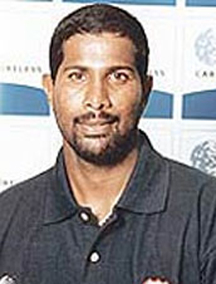At the end of another particularly bad week, the West Indies Cricket Board (WICB) issued a statement reiterating that it will “continue with its programme for the restructuring of West Indies cricket and will pursue through all available channels the arrangements that are necessary for the progress of cricket in the territories and the region.”
It was a redundant assertion, for surely that it is the WICB’s very purpose to ensure the “progress of cricket in the region”, but it was prompted by what it charged were comments by West Indies Players Association (WIPA) head Dinanath Ramnarine “seemingly aimed at establishing a familiar unsavoury and antagonistic approach towards the WICB.”
Seeing that Ramnarine’s words followed the latest in a succession of WIPA’s binding arbitration victories over disagreements between the two bodies, it should not have been surprised. He has repeatedly shown that he is not one to sympathise with the WICB’s incompetence in opening itself to such repeated decisions from independent adjudicators, in this case the Trinidadian jurist Mr. Seenath Jairam, S.C., L.L.M., who was nominated by the WICB and accepted by WIPA.

Under the MoM article heading “Minimum Standards”, he maintained that the WICB was obliged to ensure that grounds, venues, practice and medical facilities and security arrangements met the agreed standards.
Instead, the WIPA had to complain “about players having to sleep on the floors of hotels, having to bathe by standpipes and purchasing of their own meals because of inadequate food provided to the players…having to play in sub-standard grounds, stay in hotels invested (sic) by rodents and sometimes play as many as seven matches without any practice facilities made available”.

There was, undoubtedly, a measure of hyperbole in such damning charges but the point was made. The WIPA is adamant that the WICB uphold, to the letter, its commitment under the MoM.
The one guaranteed way of the WICB preventing such embarrassment is for the WICB to do just that. It is astonishing that this has proved beyond a progression of administrations, at considerable cost, and that no one on the board, from president down, has ever been held responsible for such blunders.
The latest dispute revolved around the additional T20 International in the home series against South Africa in 2010, the subsequent regional T20 the same year, players’ loss of earnings when the four-day tournament that season was reduced from two to one round and the WIPA’s “loss of sponsorship opportunities” as a result.

All told, given also arbitration and legal costs to the WIPA, the figure is almost US$2 million. It is a sum similar to most of the previous arbitrations and, once more, limits the WICB’s financial requirements for advancing the game in the region.
The reason, chief executive Ernest Hilaire contends, is that the relevant article in the contract makes them unworkable as far as the WICB is concerned.
In addition to setting minimum standards referred to earlier by Ramnarine, it obliges discussion and agreement between the two on the annual schedule of cricket for regional and international matches, the number of matches, the dates, the venues, the travel, both flight and ground, and accommodation.
In also covers matches and tournaments not listed on the International Cricket Council (ICC) programme that require separate agreement. Under the article, the parties are charged to agree “on an annual basis, prior to WICB finalizing arrangements relevant to the regional and the overseas programme”.
The CBA and MoM expired last November 30 at which point the WICB, predictably, pushed for a new arrangement. The WIPA, just as predictably, objected and was granted an extention of his earlier injunction by Justice Ricky Rahim, blocking the WICB, at least until January 19 when there will be a final ruling on the matter in court.
The WIPA’s case in that, until a new agreement is negotiated, the previous stands. In his typically forthright way, he accused the WICB of “the bullying tactic of take it or leave it” and noted that without an agreement in place there would be no protection for players’ rights.
The latest arbitration has, once more, gone in favour of the WIPA but plenty remains to be resolved between the two organizations responsible, in their different ways, for the well-being of West Indies cricket. The most momentous is likely to be the WIPA’s pending US$20 million suit against the WICB that has the potential to render all previous arbitrations and injunctions pointless.
Allied to the continuing controversy and chaos in Guyana, the future for West Indies cricket remains dark.





